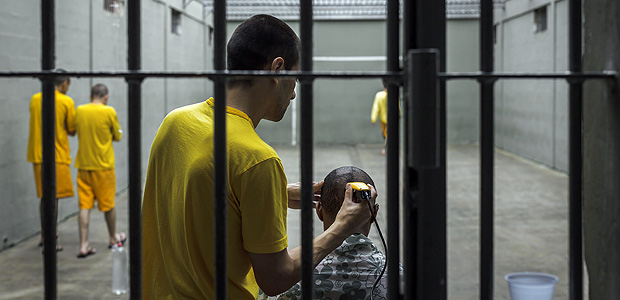Latest Photo Galleries
Brazilian Markets
17h31 Bovespa |
+1,09% | 128.509 |
16h43 Gold |
0,00% | 117 |
17h00 Dollar |
-0,83% | 5,0697 |
16h30 Euro |
+0,49% | 2,65250 |
ADVERTISING
Criminal Factions Strike Fear in Santa Catarina Metropolis Hit by Wave of Violence
12/05/2017 - 07h38
Advertising
THIAGO AMÂNCIO
AVENER PRADO
FROM JOINVILLE
Between 2011 and 2016, the number of violent deaths (including homicides, robberies and bodily injury followed by death) grew by 18% in the State of Santa Catarina (from 880 to 1,037).
The situation in Joinville, with 577 thousand inhabitants the largest city in SC, is even more alarming. In 2011, 71 people were killed compared with 131 last year - an increase of 85%, according to the Secretary for Public Safety and Security.
The tendency for the scenario this year appears to be even worse: as of last Friday (the 1st), there had been 127 violent deaths. Joinville is following the national trend that public safety and security specialists are referring to as the "interiorization of violence". The wave of murders has been moving out of state capitals, traditionally known for the violence in their outlying areas, towards smaller, but still populous municipalities.
| Avener Prado/Folhapress | ||
 |
||
| Penitentiary in Joinville, Santa Catarina |
The city, originally colonized by German immigrants, is relatively wealthy and has an HDI (Human Development Index) of 0.809, which is considered to be very high. The rate of violent deaths, 23 per 100 thousand inhabitants, is below the national average of 29.7 but much higher than the rate of 13.6 that was recorded in 2011.
The prison population is a total of 1.600 in Joinville's primary detention facilities. The penitentiary warden estimates that out of the total of 1.600 inmates in the prison complex, around 160 are connected to the PCC criminal faction, while the rest answer to the PGC.
They are separated into areas dominated by the factions, which necessitates procedures that prevent the groups from coming into contact with each other, like the division of cells, sunning areas and even school classes.
Translated by LLOYD HARDER



